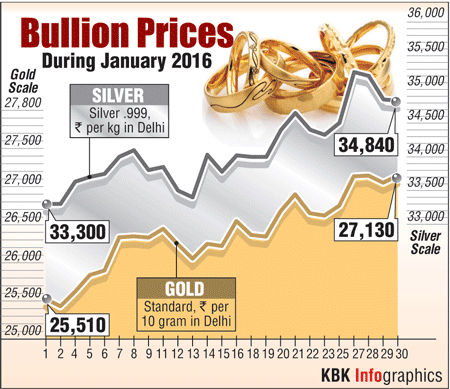
Gold prices remained largely firm during January even as global stock markets witnessed sharp correction for most part of the month for a range of factors, from slowdown in China and a sharp correction in the country's stock markets, to yuan depreciation and global sell-off in equity markets.
From Rs 25,510 per 10 gm on 1 January, gold prices saw a steady rise to close at Rs 27,130, a gain of 6.35 percent.
The safe-haven was a much-sought after commodity in the wake of uncertainty in global stock markets, worsened by falling crude oil prices that added to the woes of oil-producing countries.
Silver prices too rose during the month by 4.6 percent to close at Rs 34,840 per kg.
The trend reflected in the net asset values (NAVs) of Gold Exchange Traded Funds (ETFs) also, with most of them gaining by 4.3 percent to 7 percent during the month.
The biggest gainer was Axis Gold ETF, which saw its NAV go up 7.14 percent during the month.
Globally, analysts had predicted gold prices to fall below $1,000 per ounce on account of the strengthening of the US dollar and further interest rate hikes by the US Federal Reserve in 2016.
"As the US dollar strengthens and interest rates in the US go higher, I think gold is going to lose some of its shine. We see prices heading towards the $1,000-per-ounce mark or even lower than that in 2016," Vasun Menon, vice-president of Wealth Management at OCBC Bank had said last December.
On 29 January, the Central government raised the import tariff value on gold by $8 to $362 per 10 gm, and reduced it for silver by $14 to $443 per kg.
The import tariff value is the base price at which the customs duty is determined to prevent under-invoicing. It is normally revised on a fortnightly basis.

















